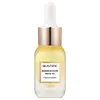What's inside
What's inside
 Key Ingredients
Key Ingredients

No key ingredients
 Benefits
Benefits

 Concerns
Concerns

No concerns
 Ingredients Side-by-side
Ingredients Side-by-side

Coco-Caprylate/Caprate
EmollientHelianthus Annuus Seed Oil
EmollientTriethylhexanoin
MaskingTocopheryl Acetate
AntioxidantSqualane
EmollientDicaprylyl Carbonate
EmollientGlyceryl Caprylate
EmollientSimmondsia Chinensis Seed Oil
EmollientCaprylyl Glycol
EmollientElaeis Guineensis Oil
EmollientPersea Gratissima Oil
Skin ConditioningVitis Vinifera Seed Oil
EmollientCeramide EOP
Skin ConditioningCeramide Ns
Skin ConditioningCeramide Ng
Skin ConditioningCeramide As
Skin ConditioningCeramide AP
Skin ConditioningCeramide NP
Skin ConditioningLimnanthes Alba Seed Oil
Skin ConditioningCamellia Japonica Seed Oil
EmollientSclerocarya Birrea Seed Oil
HumectantMacadamia Integrifolia Seed Oil
Skin ConditioningRosa Canina Fruit Oil
EmollientPlukenetia Volubilis Seed Oil
EmollientTocopherol
AntioxidantButyrospermum Parkii Butter
Skin ConditioningHydrogenated Lecithin
EmulsifyingDipropylene Glycol
HumectantSucrose Distearate
EmollientCholesterol
EmollientCoco-Caprylate/Caprate, Helianthus Annuus Seed Oil, Triethylhexanoin, Tocopheryl Acetate, Squalane, Dicaprylyl Carbonate, Glyceryl Caprylate, Simmondsia Chinensis Seed Oil, Caprylyl Glycol, Elaeis Guineensis Oil, Persea Gratissima Oil, Vitis Vinifera Seed Oil, Ceramide EOP, Ceramide Ns, Ceramide Ng, Ceramide As, Ceramide AP, Ceramide NP, Limnanthes Alba Seed Oil, Camellia Japonica Seed Oil, Sclerocarya Birrea Seed Oil, Macadamia Integrifolia Seed Oil, Rosa Canina Fruit Oil, Plukenetia Volubilis Seed Oil, Tocopherol, Butyrospermum Parkii Butter, Hydrogenated Lecithin, Dipropylene Glycol, Sucrose Distearate, Cholesterol
 Reviews
Reviews

Ingredients Explained
These ingredients are found in both products.
Ingredients higher up in an ingredient list are typically present in a larger amount.
Squalane is an emollient that helps the skin hold onto moisture. It's an oily liquid that occurs naturally in certain types of fish and plant oils.
Because squalane boosts hydration in the skin, it also comes with plenty of benefits: it is an antioxidant and can help fight free radicals and skin damage. Squalane is also found to have a detoxifying effect when applied.
Squalane comes from squalene, which occurs naturally within the sebum of our skin. It is one of the oils our skin produces to keep itself hydrated. Squalane is the hydrogenated version of squalene and has a longer shelf life.
Research shows that squalane is non-irritating (even at 100% concentration).
In general, it's a fantastic ingredient. It does a great job at hydrating the skin, and it's suitable for those with sensitive skin.
The source of squalane may impact malassezia / fungal acne. This is because olive oil derived squalane can contain impurities such as fatty acids and plant waxes. Sugarcane derived squalane is recommended for anyone with malassezia concerns.
Is squalane vegan?
This depends on the source. Squalane can be derived from both plants and animals. Most squalane used in skincare comes from plants.
Please note: the source of squalane is only known if disclosed by the brand. We recommend reaching out to the brand if you have any questions about their squalane.
Read more about squalene with an "e".
Is squalane an oil?
Squalane is often called an oil, but it’s technically not; it’s a hydrocarbon, meaning it’s only made of carbon and hydrogen, unlike true oils which are triglycerides made of fatty acids and glycerol.
The term “oil-free” isn’t regulated, so companies can define it however they want. Some exclude all oils, while others just avoid mineral oil or comedogenic oils.
While some people avoid oils thinking they cause breakouts, the right kind of oil (or oil-like ingredient like squalane) can actually help balance and hydrate your skin. It’s worth testing out simple oils or squalane to see what works best for your skin.
Learn more about Squalane